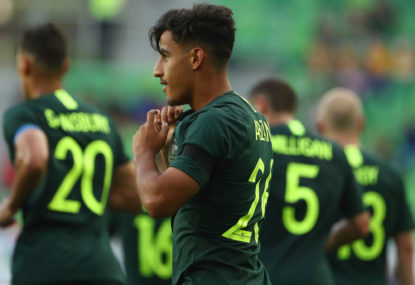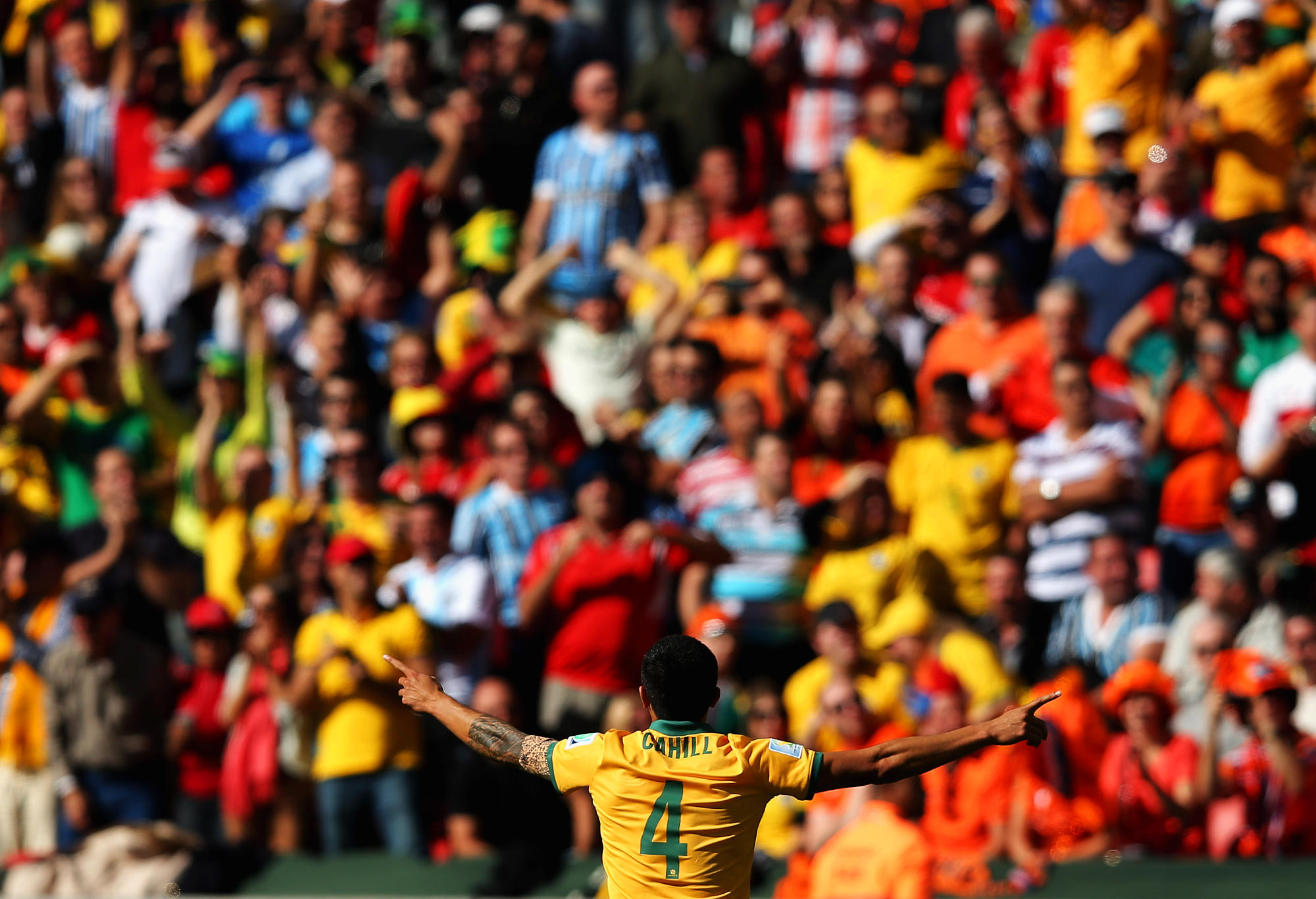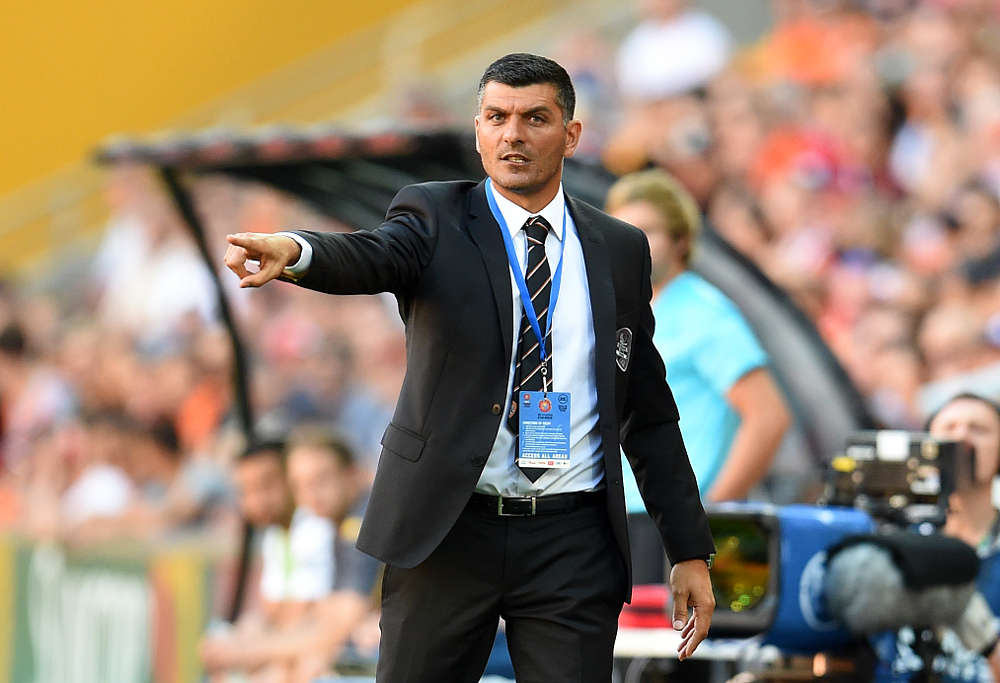Young excellence, promotion battles, and a happy farewell: The Australian team of the week from players around the globe
Even though St.Pauli ultimately lost a high-scoring affair, Jackson Irvine was a standout, as well as scoring a late goal.

How do we develop better players? That is the question we must be asking after exiting the World Cup at the group stage.
If we can look at this World Cup objectively and learn and innovate, then it’s been successful; if we don’t and we keep doing the same things, then nothing will change.
We seem to be doing well in the midfield department, but fullbacks and strikers have always left us a little wanting. It doesn’t help that every striker position in the A-League are taken by foreigners, but as we see with George Blackwood, maybe it’s a correlation, not causation, that our strikers just aren’t good enough.
Then you have John Roberts, who played the international round robins in China last year with Melbourne City, winning the golden boot, which featured some high-profile European clubs and is not seen on the bench for City or the Jet’s where he is now.
There are a few things hindering development, especially in the striker department.

(Dean Mouhtaropoulos/Getty Images)
1. Coaching
since the FFA cancelled the Centre of Excellence at the Australian Institute of Sport and put development onus on the clubs, they haven’t done enough to facilitate that change. Not every A-League club have academies yet.
Coaching training is still too expensive and hard to access for a lot of people and there are way to many clubs that rely on mum or dad trying to do their best.
Otherwise parents have to pay through the nose for a good coaching set-up, which is more the problem of clubs being greedy (because they can be), The FFA could put caps on fees relative to the ranking system they set up a year or two ago.
Iceland has had rapid growth recently, with a large part of their success attributed to, according to the UK’s Telegraph, “Along with the new facilities came new coaches. Breidablik alone has 31. There is one Uefa-qualified coach for every 500 people; in England, it is one in 5000.”
I would be scared to know what it is here, only counting registered players. I wonder what the numbers would be – our registered players are around four or five that of the whole population of Iceland?

(AAP Image/Dan Peled)
2. Striker-specific training
Clearly what we are doing and have been doing for 20 years isn’t working, the national training centre is a step in the right direction, our players coming through have a higher technical ability than before, but we haven’t got it right when it comes to striker training or we aren’t doing enough specific training in this area.
Watching some youth training at Porto will shine some light on what I am trying to say, game specific and repetitious striking training and this standard is what we are competing against.
Can we do it better or find a better balance?
Personally I think there needs to be a review of our training methods to have them better tailored to our needs and shortcomings.
3. Talent identification
Scouting has always been abysmal in this country, and not only that, but there has always been an undercurrent of pay-to-play and eastern state bias, even though South Australia has a great reputation of Socceroos and Joondalup in Western Australia keeps churning out quality youth potential. It’s quite incredible, really, what that club does.
I’m not sure if A-League clubs or the FFA youth representative teams are doing enough. Why do we hear that some clubs in Europe sign obscure players we have never heard of before?
Are we not selecting or are we stifling player personalities to the roles they play? Maybe a bit of both, but strikers are famous for their tenacity, selfishness and ego in a world where team play is encouraged. Are our natural strikers missing out or spurned for the very qualities that they should have for that role?
Equally for fullbacks, I would argue should be one of the best players on the park (bias, I was a fullback), having to defend, dribble, cross, pass, fitness and speed – they really are a specialised role.
More often than not we see a winger get converted, or a defensive midfield or centre back. There’s nothing inherently wrong with that, but it seems that full back is a secondary thought and not seen as the vital cog that it is.

(Jason Heidrich/Icon Sportswire via Getty Images)
4. Player pathways
The professional environment is very limited – there are only nine professional clubs in Australia. There are some talented youth not getting game time because there aren’t enough spots to go around. Why wasn’t Daniel Arzani playing earlier?
Because the journeymen can fill spots, but with more teams the player pool gets thinner and the difference between starting a young player over a journeyman becomes a viable option which in turn encourages youth development and so on.
We need more A-League clubs and we need a professional second division yesterday in which a young striker can play full-time and get experience and challenge the foreign contingent. The gap between the A-League and the NPL is too large – young strikers and players aren’t getting the leg up they need.
Youth development is a bit of a numbers game, the Japanese caught onto this quickly with their 100-year vision.
There also needs to be proper transfers between clubs to encourage youth development and provide an income stream for smaller clubs – $20,000 to $50,000 to an NPL club with no sell-on fee is deplorable and doesn’t encourage youth development.
Imagine if Sydney had to pay for David Carney, or the numerous players Central Coast Mariners or Brisbane Roar lost over the years to other A-League clubs. It either would have helped those clubs be more competitive, provided an income stream to invest in youth or keep them out of financial worries.
You don’t have to agree or disagree, but I hope I have at least created some food for thought, and others may (almost certainly) have better suggestions than myself.